Monstera Esqueleto is a species of rainforest plant originating from the Central and South American rainforests, renowned for its magnificent foliage. Its large, uniquely perforated leaves have made it a popular choice for lovers of houseplants. In this guide, we will delve into the care requirements, propagation methods, and other aspects of growing a thriving Monstera Esqueleto. Whether you’re a seasoned plant parent or a novice, the following information will be invaluable in helping you understand and cater to this spectacular specimen.
How do you care for Monstera Esqueleto?
Does the Eskeleto monster require full daylight?
No, Monstera Esqueleto does not need direct sunlight. In fact, direct sunlight can be harmful to this plant, potentially causing burns on its leaves. While the plant favors bright environments, it is best to provide it with indirect light for best results. If you position the flower by a north- or east-facing window, it will get enough brightness without the risk of direct exposure. If the sun’s direct rays are unavoidable in your space, consider using a sheer curtain to diffuse the light and protect your Monstera Esqueleto.
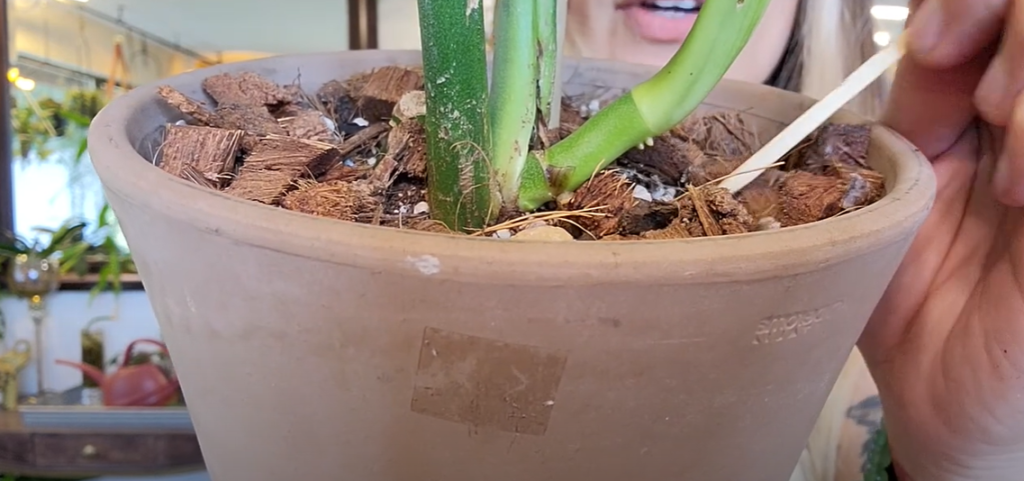
How often should you water Monstera Esqueleto?
Watering frequency for Monstera Esqueleto is contingent upon the conditions in which it is grown. Under ideal circumstances, watering should take place when the top 1-2 inches of soil feels dry to the touch. This usually equates to watering approximately once a week. However, during colder months or in less humid environments, the plant may require less frequent watering. Always ensure to drain excess water to protect against moisture and corner rot. It’s important to remember that overwatering can be just as detrimental as underwatering, so it’s crucial to find a balance that suits your particular plant’s needs.
Does Monstera Esqueleto need humidity?
Yes, Monstera Esqueleto, like most tropical plants, thrives in a humid environment. It is accustomed to the moist, warm climate of the natural rainforest. Consequently, it appreciates humidity levels of 60% or higher. Dry air can lead until the tips of the leaves are browned and slowed growth. To maintain high humidity, regularly mist the plant or place it atop a tray of gravel covered with water. You could also consider using a humidifier, particularly during winter when indoor air tends to be drier. However, avoid over-humidifying, as this could encourage mold growth or pests. Balancing humidity needs correct ventilation is key to a healthy flower.
What soil does Monstera Esqueleto need?
Monstera likes good, drained ground to prevent water-logging and root rot. A popular choice is a mix of peat moss and perlite in a 1:1 ratio, which provides good aeration and drainage. Alternatively, a high-quality indoor plant with a soil mix with the addition of perlite or orchid dust is perfect. The added benefit of using orchid bark is that it mimics the plant’s natural growing conditions, as these plants often grow on other trees in the wild. Remember, the key is to ensure the soil retains some moisture but doesn’t stay waterlogged. It is essential to check the ground prior to irrigation and water until the top 1-2 inches of ground is soft to the feel.

When should you report Monstera Esqueleto?
Monstera Esqueleto typically requires repotting every couple of years, ideally during the spring or early summer when the plant is in its active growth phase. The telltale signs your Monstera Esqueleto needs repotting include: water draining out quickly after watering, indicating the plant is root-bound; noticeable decline in growth despite adequate care; or roots growing out of the drain holes. When repotting, choose a pot that is 1-2 inches larger in diameter than the current one. Ensure that the fresh pot has enough holes for water drainage and use a good grade, fully drained potting mix. After repotting, water thoroughly and place the plant back in its preferred spot. Be mindful that your Monstera Esqueleto may need a few weeks to adjust to its new environment, so don’t be alarmed if growth slows temporarily.
Should you prune Monstera Esqueleto?
Yes, pruning Monstera Esqueleto can be beneficial for its overall health and appearance. Pruning allows you to control the plant’s size and shape, remove dead or yellowing leaves, and promote bushier growth. The best time to prune is in the spring or early summer, during the plant’s active growth phase. Use a clean, sharp pair of garden shears to make your cuts, and always aim to cut just above a leaf node. This is where new growth will emerge. Remember to wear gloves, as the sap of the Monstera Esqueleto can cause skin irritation. After pruning, keep an eye on the plant to ensure it isn’t showing signs of stress or disease. Regular pruning not only helps maintain your Monstera Esqueleto’s aesthetics but also encourages it to grow more vibrantly.[1],[2]
How to identify Monstera Esqueleto
Monstera Esqueleto, otherwise referred as the Skeleton Monstera, can be easily recognized by its distinct and captivating foliage. The leaves of this plant are typically large and heart-shaped, featuring elongated and tapering points that add a touch of elegance. One of the key identifying features of Monstera Esqueleto is the presence of large fenestrations or natural holes in the leaves, which resemble those found in other Monstera species. These fenestrations not only enhance the visual appeal of the plant but also serve a functional purpose by allowing light to penetrate through the leaves and promoting healthy growth.
When admiring a Monstera Esqueleto, one cannot help but be mesmerized by the glossy and richly green leaves, which contribute to the plant’s striking appearance. The vibrant green color adds a fresh and lively touch to any space, making it a perfect addition to any indoor garden or botanical collection. Moreover, the robust stems of the Monstera Esqueleto are specifically designed to support climbing in its natural habitat, showcasing the plant’s adaptability and resilience.
When attempting to identify a Monstera Esqueleto, it is important to pay special attention to these distinctive features. However, it is worth noting that young Monsteras may not exhibit all these characteristics immediately. The development of fenestrations and larger leaf size occurs as the plant matures, adding to its beauty and allure over time. So, whether you’re a seasoned plant enthusiast or just starting your botanical journey, the Monstera Esqueleto is sure to captivate and delight with its intricate details and unique charm.[1]
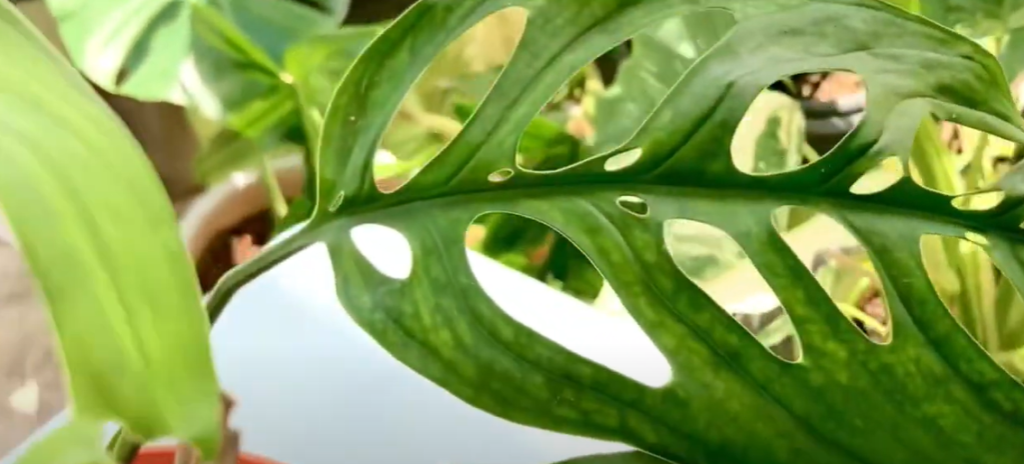
How to propagate Monstera Esqueleto
Propagating a Monstera Esqueleto is an exciting and rewarding way to expand your plant collection. This process allows you to create new plants from a single parent plant, giving you the opportunity to share the beauty of this unique species with others.
To begin, gather a sharp and clean pair of garden shears. It’s important to use sanitized tools to prevent any potential infections during the cutting process. Next, carefully select a healthy stem with several leaves and nodes. These nodes are essential for new root development. When making the cut, aim to trim just below a node, leaving a piece of stem approximately 6 inches long. This length will provide ample space for root formation.
Now it’s time to prepare the cutting for rooting. Place the stem in a glass of water, ensuring that the nodes are fully submerged. Find a bright and warm location for the glass, but make sure it’s not exposed to direct sunlight. This optimal environment will encourage root growth. Remember to change the water every week to prevent bacterial growth and maintain a healthy rooting environment.
After a few weeks, you should start to see the first signs of root development from the nodes. As the roots grow to a few inches in length, it’s time to transfer the cutting into a pot. Choose a well-draining soil mix that mimics the conditions preferred by a mature Monstera Esqueleto plant.
Once potted, water the cutting thoroughly and place it in an area with bright, indirect light. This will provide the necessary conditions for the new plant to thrive. Remember to be patient during this process, as it may take several weeks or even months for substantial roots to develop. To encourage root growth, you can consider using rooting hormone, although it is not necessary for successful propagation.
By following these detailed steps, you can successfully propagate a Monstera Esqueleto and enjoy the beauty of this plant in multiple locations. [1]
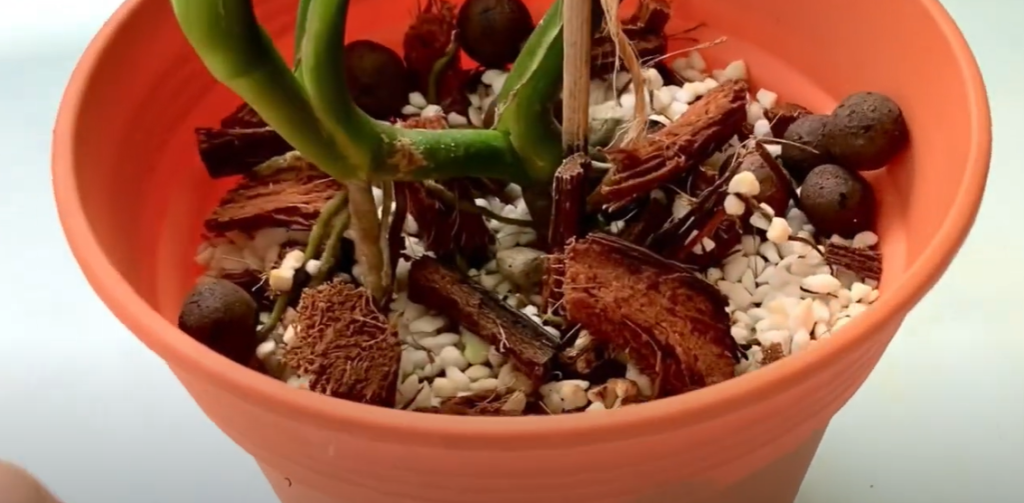
FAQ
How do you care for Monstera Esqueleto cuttings?
Once your Monstera Esqueleto cutting has been potted, it’s crucial to provide it with the right care to encourage optimal growth. Firstly, place the cutting in a well-lit area with bright, indirect light. This will ensure that the leaves receive the necessary amount of light without being scorched by direct sunlight. On the other hand, exposing the cutting to low light conditions can stunt its growth.
In addition to proper lighting, Monstera Esqueleto cuttings thrive in high humidity environments, just like mature plants of the same species. To maintain adequate humidity levels, consider misting the leaves regularly or using a pebble tray or humidifier nearby. This will create a favorable atmosphere for the cutting to grow and develop.
When it comes to watering, it’s important to strike a balance. Water the cutting when the top 1-2 inches of soil feels dry to the touch. However, be cautious not to overwater as this can lead to root rot. Keep in mind that the cutting requires less water compared to mature plants. Adjust your watering routine accordingly to avoid any potential issues.
To support growth, you can apply a balanced liquid fertilizer once a month during the growing season. However, make sure to dilute the fertilizer to half the recommended strength. This is crucial to avoid burning the young roots of the cutting.
Lastly, it’s essential to exercise patience throughout the process. It may take several weeks or even months for your Monstera Esqueleto cutting to fully establish and start exhibiting new growth. During this period, closely monitor the plant for any signs of stress or disease, and adjust your care routine as needed.
By providing the right care and attention, you’ll set the stage for your Monstera Esqueleto cutting to flourish and thrive in its new environment.
Why is my Monstera Esqueleto not growing?
Several factors could be contributing to your Monstera Esqueleto’s stagnant growth. Firstly, consider the lighting conditions. Although this species can tolerate low light, it prefers bright, indirect light to truly thrive. If the plant is exposed to too little light, it may exhibit slow or halted growth. On the other hand, if it receives too much direct sunlight, its leaves can scorch and hinder growth. Finding the right balance is crucial for optimal growth.
Secondly, evaluate your watering routine. Both overwatering and underwatering can stunt the growth of your Monstera. The soil should be allowed to dry out a bit between waterings, but not completely. Overly soggy soil can lead to root rot, which can also impede growth. On the other hand, if the plant is consistently under water, it will struggle to absorb enough moisture and nutrients from the soil. Monitoring the moisture level and adjusting your watering frequency accordingly is important for promoting healthy growth.
Thirdly, the issue could be related to feeding. Monsteras are heavy feeders during their growing season and may exhibit slowed growth if they’re not receiving enough nutrients. A lack of essential nutrients, particularly nitrogen, can limit the plant’s growth and overall health. Consider using a balanced fertilizer specifically formulated for houseplants to provide your Monstera with the necessary nutrients it needs to thrive.
Lastly, remember that plants have a natural dormancy period during cooler months, and growth will naturally slow down or stop during this time. If the plant appears otherwise healthy and it’s during the fall or winter, this could be the reason for its stagnant growth. During this period, it’s important to provide your Monstera with appropriate care, such as reducing watering frequency and avoiding fertilization, to allow it to rest and prepare for the upcoming growing season.
Adjusting these factors according to the plant’s needs can help boost the growth of your Monstera Esqueleto and ensure its overall health and vitality. Regular monitoring, proper lighting, watering, feeding, and understanding the plant’s natural growth cycle are key to promoting optimal growth and enjoying a thriving Monstera.
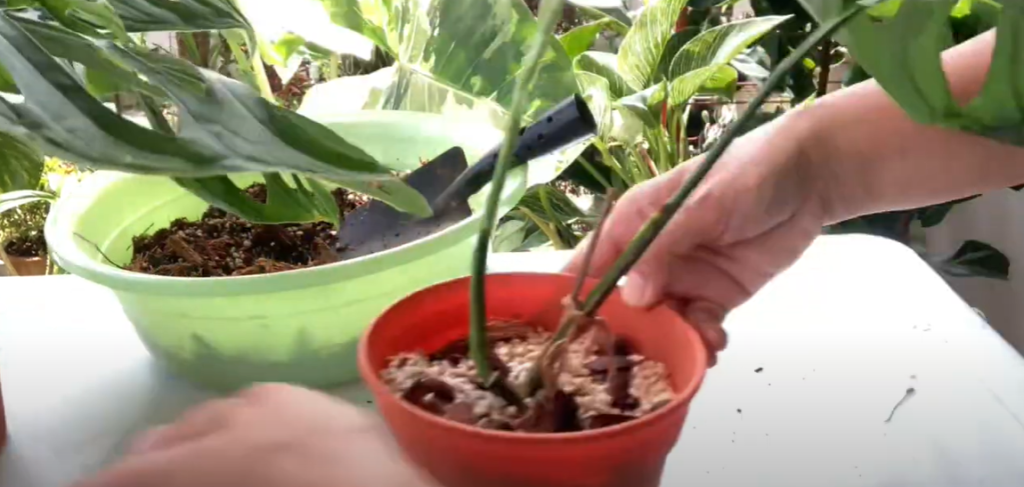
How big does Monstera Esqueleto get?
Monstera Esqueleto, also known as the Skeleton Monstera, is a captivating plant that can attain impressive sizes when provided with optimal care and the right conditions. In its natural habitat, this species has been observed to reach towering heights of 15 to 20 feet as it gracefully climbs up trees and other supportive structures. Indoors, with proper support and attentive care, it has the potential to grow up to 10 feet tall, although this can vary depending on various factors. The size of the plant within indoor settings is predominantly influenced by the surrounding environmental conditions and the level of care it receives.
Not only does Monstera Esqueleto boast impressive height, but its leaves can also attain notable dimensions. With maturity, the leaves can elongate to approximately 2 feet in length, showcasing their stunning beauty and remarkable foliage. However, it is important to note that the plant’s growth may slow down or even temporarily pause during its natural dormancy period in the cooler months.
To ensure the continued growth and maintenance of its size, it is crucial to provide your Monstera Esqueleto with adequate light, water, and essential nutrients. By creating a suitable environment that mimics its natural habitat, you can foster a thriving and flourishing plant that will bring joy and aesthetic appeal to any space.
Does Monstera Esqueleto climb?
Yes, the Monstera Esqueleto, also known as the Skeleton Monstera, is a fascinating natural climber. In its native habitat, this plant gracefully entwines itself on the trunks of towering trees, utilizing its aerial roots to firmly attach and ascend towards the sun-drenched rainforest canopy. This climbing behavior is not merely a survival strategy but also an integral part of its growth and development. By reaching higher and gaining better access to the abundant natural light, the Monstera Esqueleto promotes the expansion of its foliage, resulting in larger leaf sizes and more striking fenestrations.
When cultivating a Monstera Esqueleto indoors, it is highly recommended to recreate its natural climbing environment by providing adequate support, such as a sturdy moss pole or a decorative trellis. This not only mimics its preferred climbing habit but also contributes to its overall aesthetic appeal. It is worth noting that initially, the young plant may require gentle guidance and training to securely attach to the support structure. However, with the passage of time, the Monstera Esqueleto will naturally embrace its innate inclination to climb and flourish in its lush, vertical ascent.
Embrace the captivating journey of nurturing a Monstera Esqueleto, and witness the delightful transformation as it gracefully conquers new heights in your indoor sanctuary.
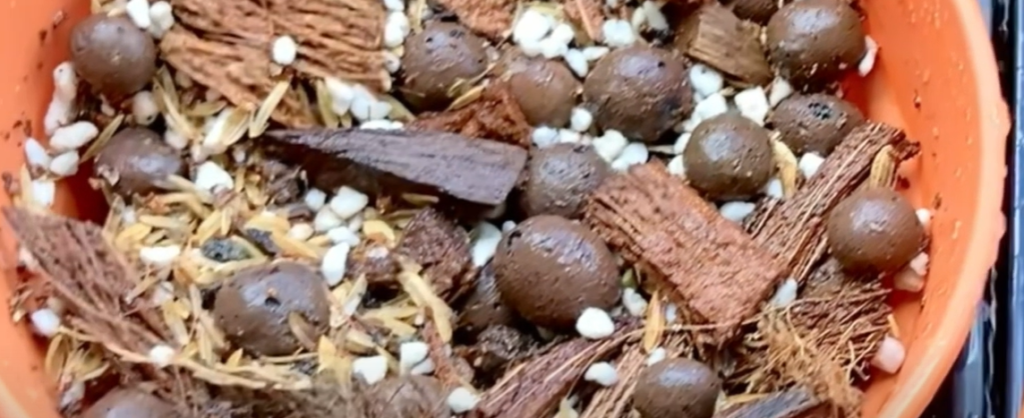
Does Monstera Esqueleto need a moss pole?
While not strictly necessary for survival, providing a moss pole or a similar climbing support can greatly enhance both the health and aesthetics of your Monstera Esqueleto. In their natural rainforest habitat, these plants are known for their voracious climbing tendencies, effortlessly scaling tall trees in search of precious sunlight. By mimicking this natural behavior in a domestic setting through the use of a moss pole, you can encourage your Monstera Esqueleto to grow upwards, which in turn can stimulate larger leaf growth and more pronounced fenestrations. Additionally, using a climbing support helps manage the plant’s size and spread, especially in confined spaces, ensuring it remains in its designated area. And fear not if a moss pole is not readily available, as other forms of support like a trellis or even a sturdy wooden stick can also be utilized effectively. So, by incorporating a climbing support, you not only provide your Monstera Esqueleto with a nurturing environment but also create a stunning display of its natural climbing prowess right in your own home.
Is Monstera Esqueleto rare?
Yes, the Monstera Esqueleto is widely regarded as a rare and somewhat elusive species within the plant community. This intriguing plant is native to the lush tropical rainforests of Central and South America, where it thrives in the shade of towering trees and vines. Its distinctive skeletal-like leaves, characterized by intricate perforations and unique fenestrations, make it a captivating addition to any plant enthusiast’s collection.
Due to its rarity and peculiar growth requirements, the Monstera Esqueleto is not commonly found in conventional nurseries or garden centers. Its specific care needs, including high humidity and indirect light, coupled with its relatively slow growth rate, contribute to the challenge of cultivating this species on a large scale. As a result, obtaining a mature and healthy Monstera Esqueleto can be quite a feat.
However, despite its scarcity, the demand for this extraordinary plant continues to soar. Its stunning appearance and the allure of its rarity have captivated the hearts of plant enthusiasts worldwide. The Monstera Esqueleto’s distinct and eye-catching foliage, with its intricate lacy patterns, truly sets it apart from other plants. The limited availability of this species further adds to its appeal, making it a highly sought-after treasure among collectors.
It’s worth noting that the scarcity of the Monstera Esqueleto often translates into higher prices when it is available for purchase. The combination of its striking aesthetics, rarity, and the satisfaction of successfully caring for this unique plant contributes to its hefty price tag. However, for those willing to invest the time, effort, and patience, cultivating and propagating the Monstera Esqueleto at home can be a rewarding endeavor.
By providing the Monstera Esqueleto with the right conditions, including a well-draining soil mix, consistent moisture, and a humid environment, it is possible to witness its growth and propagation firsthand. With diligent care, this stunning species can grace your living space, adding a touch of exotic beauty and a sense of accomplishment to your indoor garden.
So, if you are up for the challenge and have an appreciation for the extraordinary, consider embarking on the journey of cultivating the Monstera Esqueleto. In return, you will be rewarded with the enchanting presence of this rare and captivating plant in your own home.
Useful Video: Monstera Esqueleto I Care and How I Propagated
Conclusion
The Monstera Esqueleto, also known as the Skeleton Monstera, is indeed a truly majestic and rare species that brings an exotic touch to any indoor garden. With its unique climbing nature, characterized by its aerial roots and ability to grow upwards, it adds an intriguing vertical element to your plant collection. The large fenestrated leaves, featuring artistic splits and holes, not only create a stunning visual effect but also serve a purpose in the plant’s natural habitat by allowing sunlight to reach the lower parts of the plant.
The Monstera Esqueleto’s striking aesthetics make it a highly prized plant among enthusiasts and collectors alike. Its captivating appearance, reminiscent of a tropical rainforest, instantly elevates the ambiance of any room. While it may require patience and attentive care to thrive, the rewards, in terms of its unrivaled beauty and growth, are well worth the effort.
To ensure the optimal health and growth of your Monstera Esqueleto, it is important to provide it with the right conditions. Bright, indirect light is essential, as it mimics the dappled sunlight that the plant receives in its natural habitat. A well-draining soil mixture, enriched with organic matter, will provide the necessary nutrients while preventing waterlogging, which can be detrimental to the plant’s roots.
In addition to the light and soil requirements, the Monstera Esqueleto benefits from a regular feeding regimen. Fertilizing with a balanced, water-soluble fertilizer during the growing season will help promote healthy foliage and robust growth. Furthermore, providing the right support for climbing is crucial. As the plant matures, it will produce aerial roots that can be guided and secured onto a moss pole or trellis, allowing the Monstera Esqueleto to reach its full potential in height and lushness.
With these ideal conditions met, your Monstera Esqueleto will not only grow and flourish but also become a remarkable focal point in your home, captivating everyone with its unique charm and elegant presence. Let this extraordinary plant transport you to the enchanting world of tropical wonders, right in the comfort of your own space.
References:
- https://houseplantauthority.com/monstera-esqueleto/
- https://monsteraplantresource.com/monstera-esqueleto-plant-care-guide/



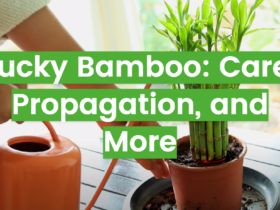
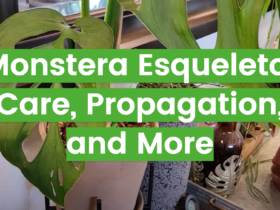
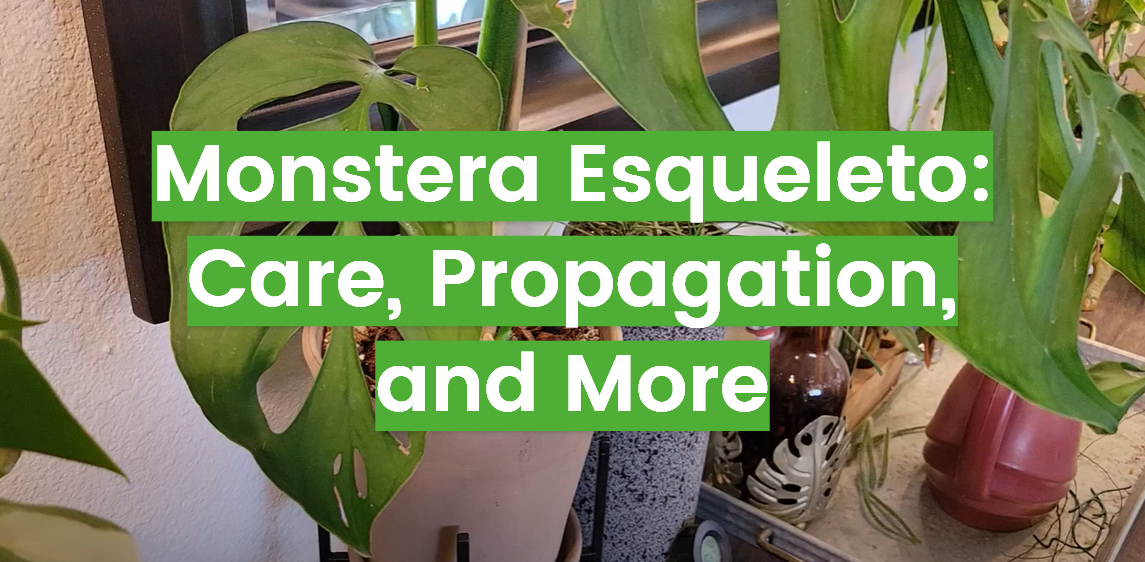

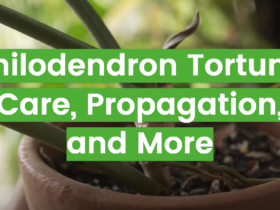
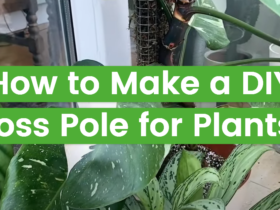
Leave a Review